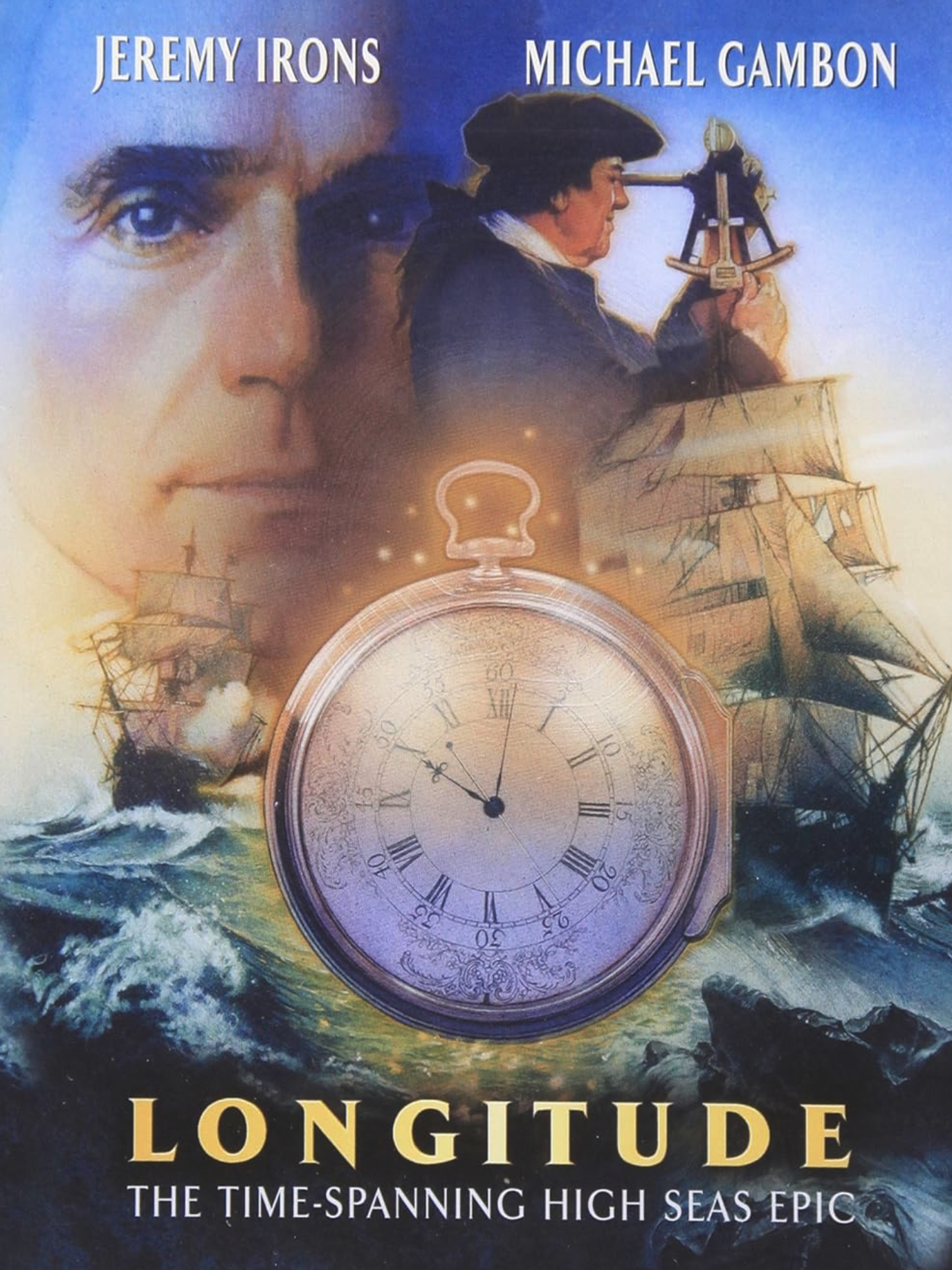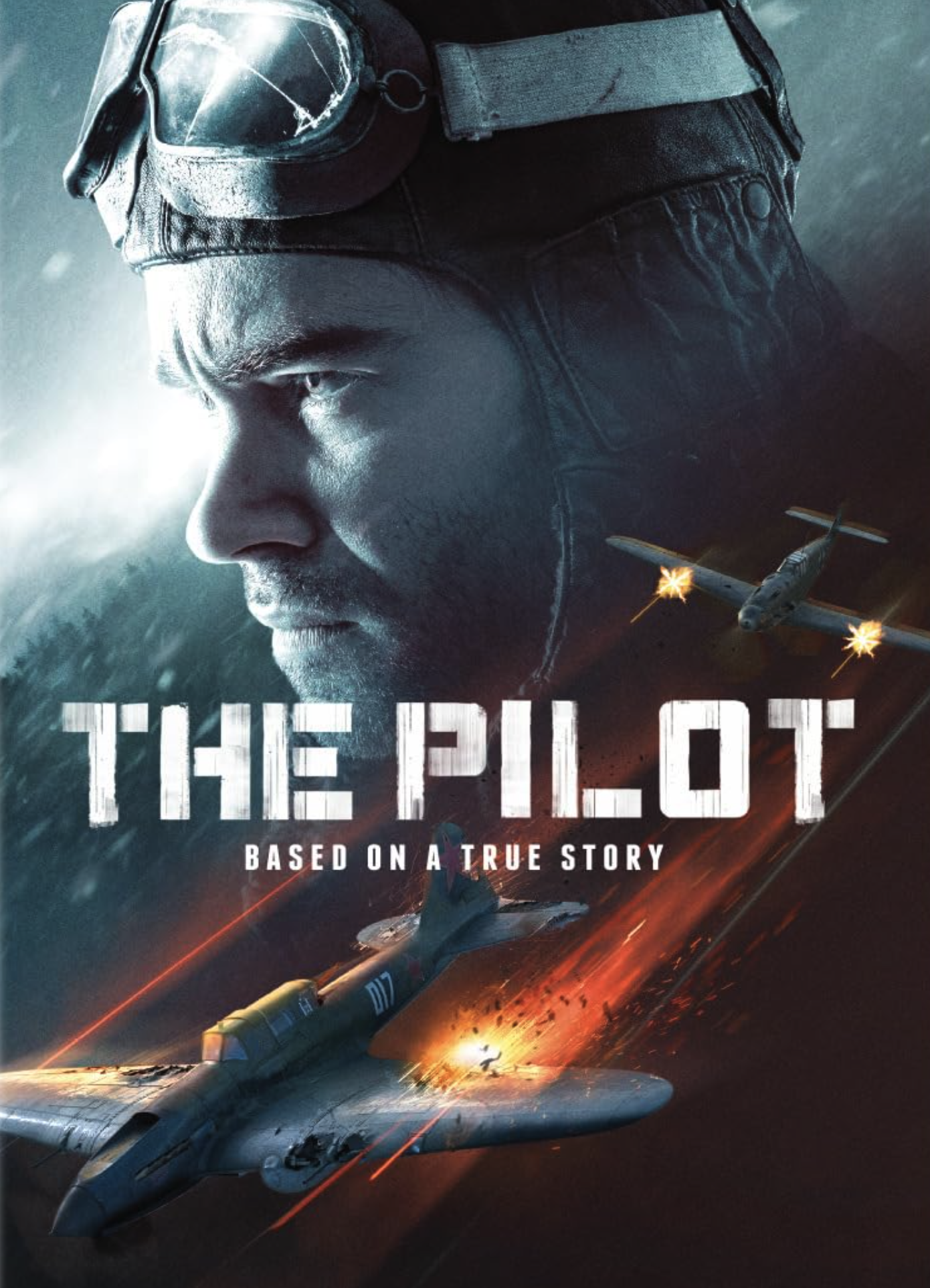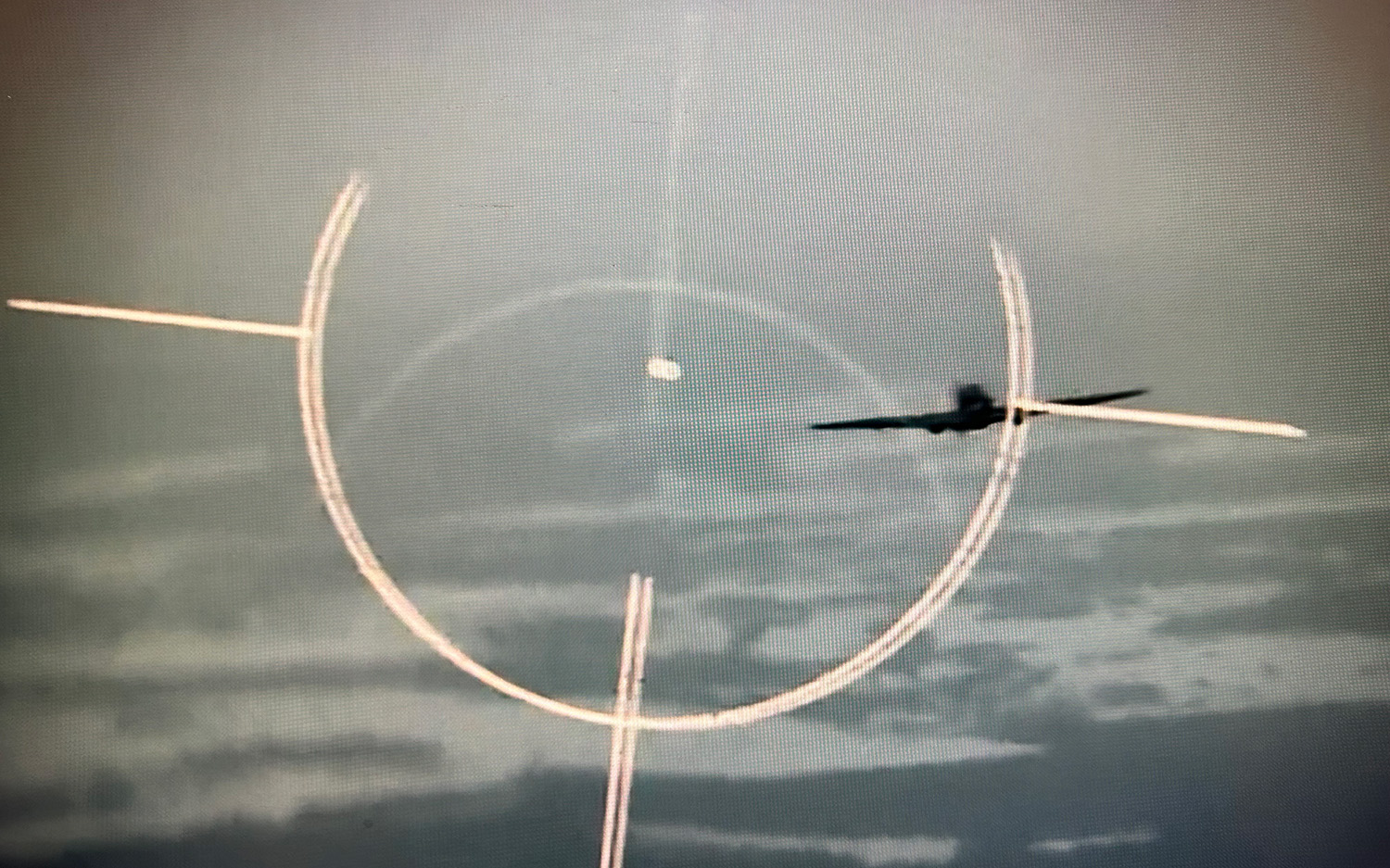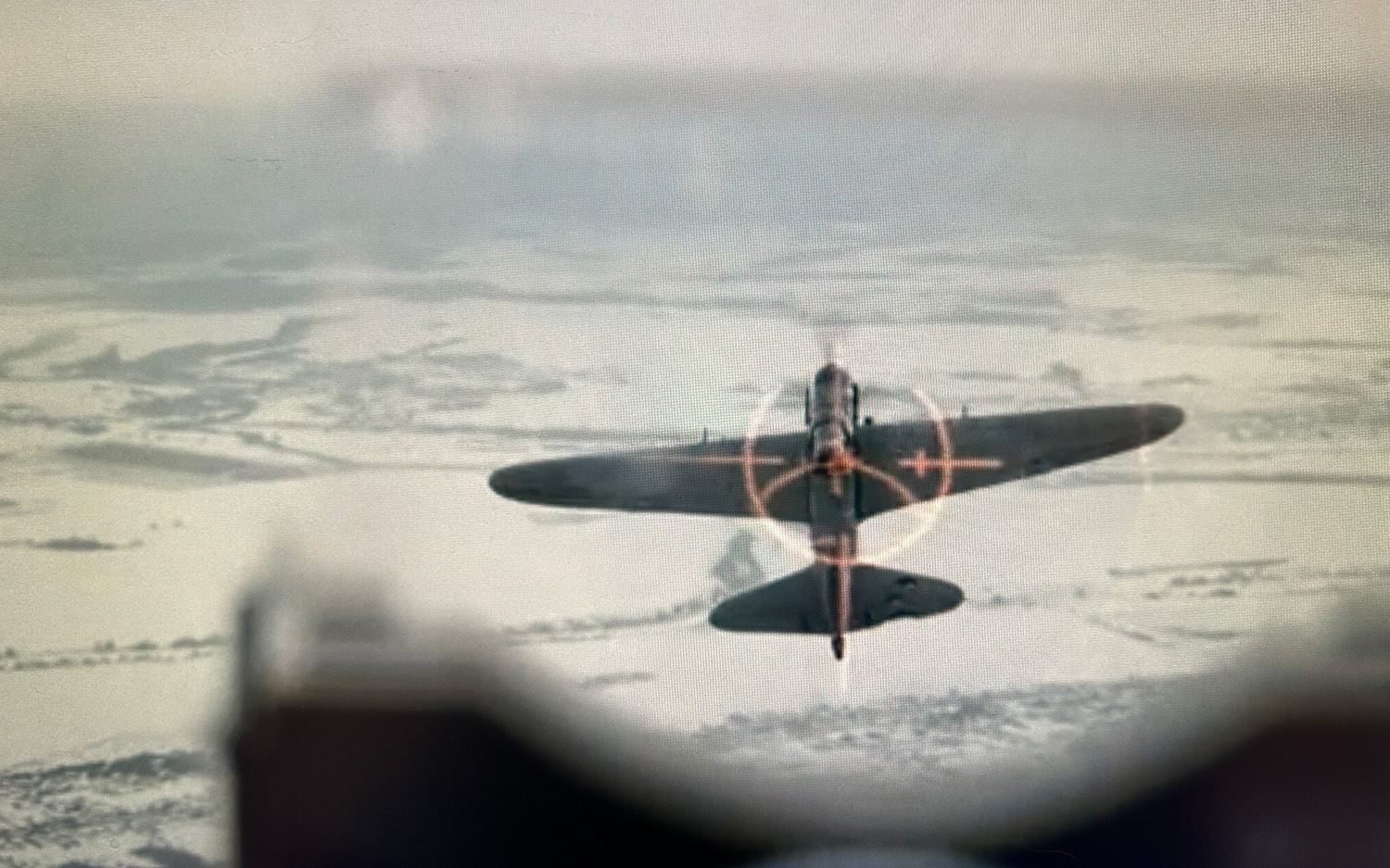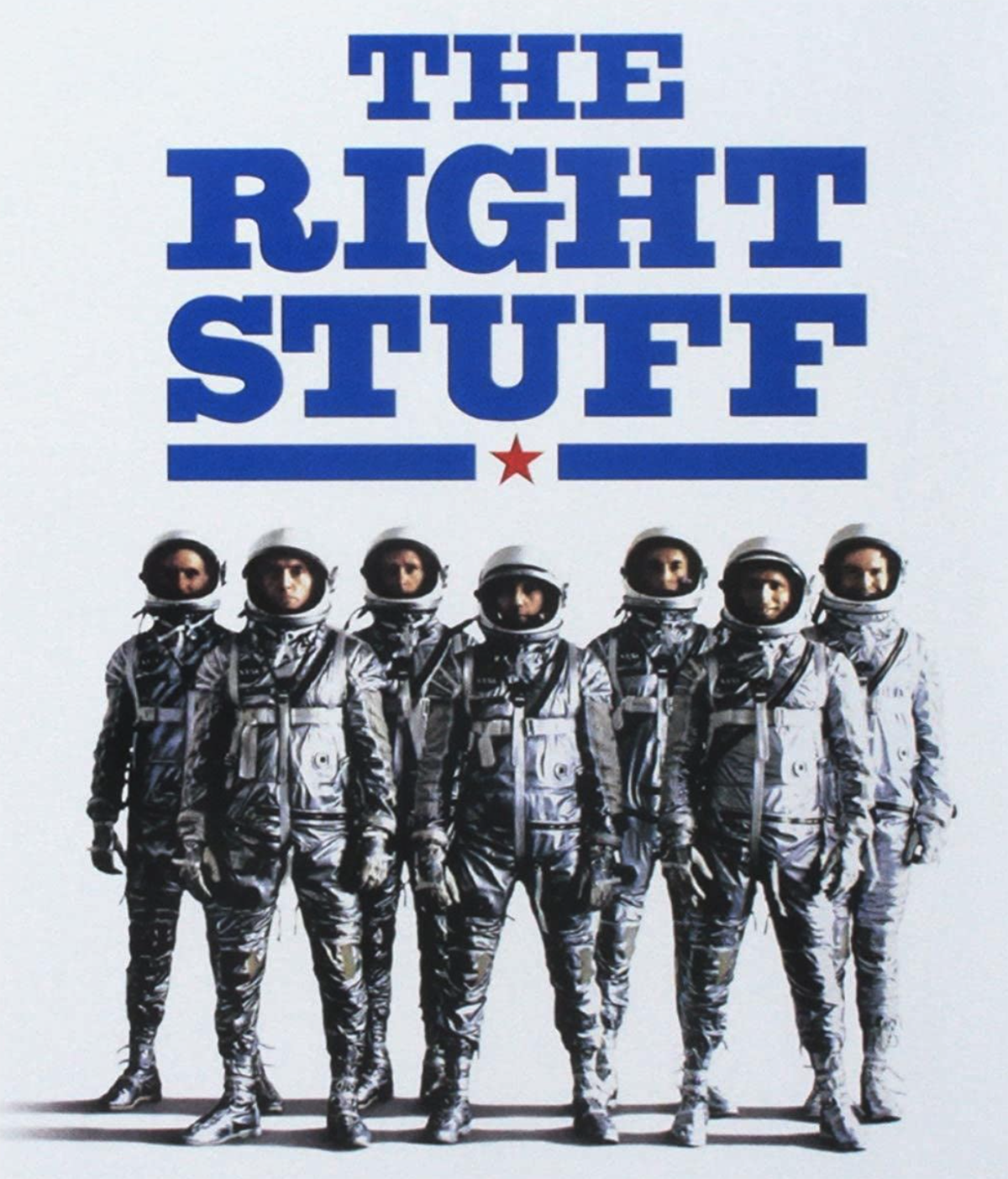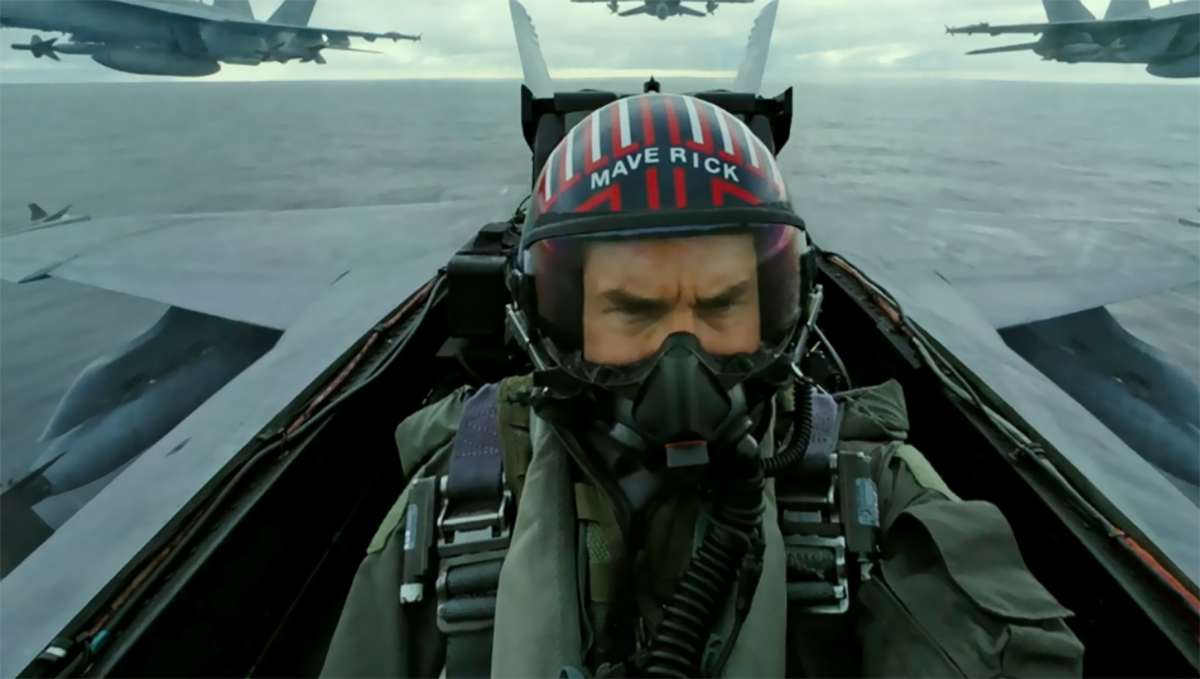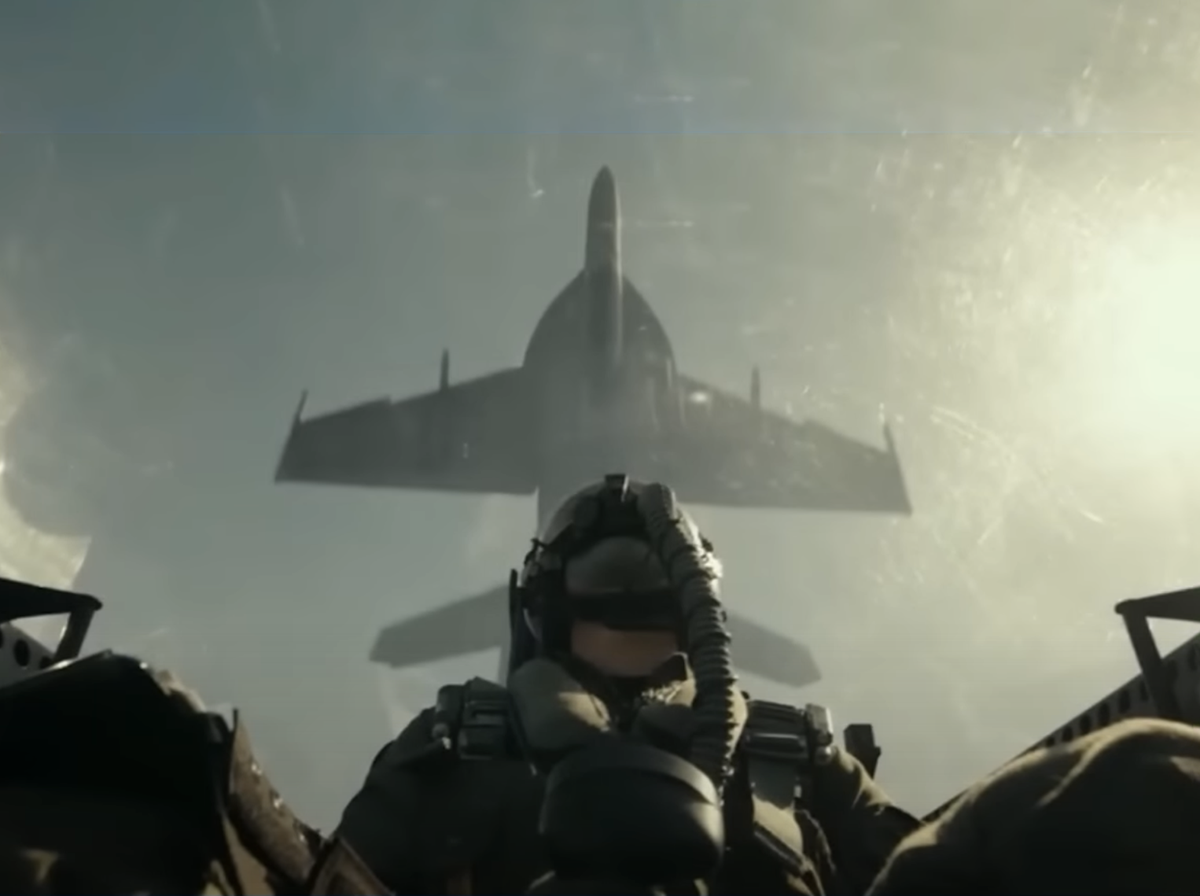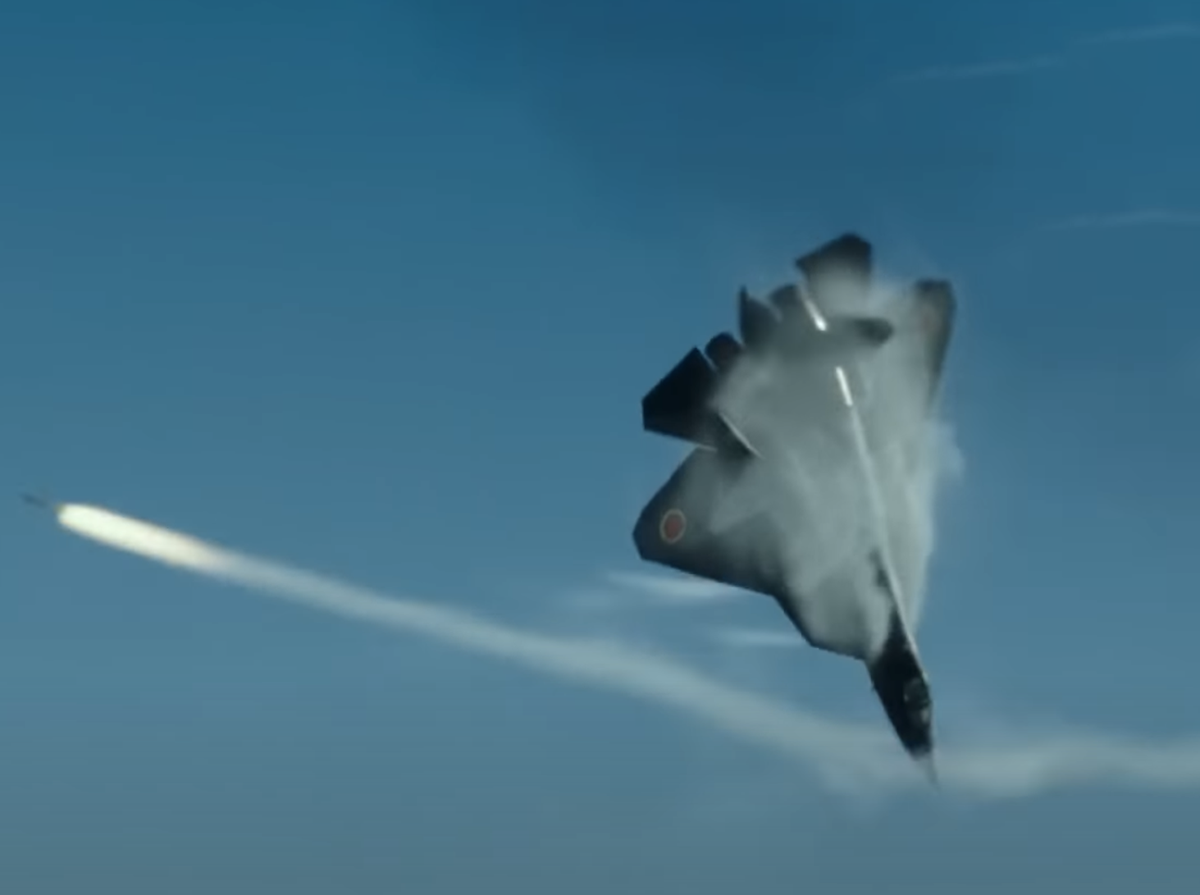I do occassional movie reviews in the monthly newsletter. Here they are.
— James Albright

Updated:
2024-11-15
Catch-22
Reviewed: March 18, 2024)
The best way to get the most out of the movie Catch-22 is to first read the book. The best way to get the most out of the book Catch-22 is to first see the movie. See what I’ve done there? Yes, they can both be confusing on first viewing and reading, but after three or four viewings and readings, you will realize that the time invested was well worth it. Maybe a short review of the movie can help you appreciate it more on your first viewing.
You may have seen scenes of the movie and the B-25 bomber and thought this was a movie about airplanes and World War II. I certainly did. Then when I finally saw the movie, I believed it was an anti-war movie, which in many ways it is. I then read the book and thought it was a book about how screwed up the Army Air Force was. I was a second lieutenant flying in the Strategic Air Command and saw many things in my life that paralleled the movie. After a few years I reread the book and began to think Catch-22 applies to any large bureaucracy. Just when I think I have it figured out, I discover something new. For now, let’s concentrate on the movie. We’ll cover the book in the future.
Timeline: we start at the end
The first scene of the movie is of a bombed-out building where we can see navigator Captain John Yossarian, Alan Arkin, having a conversation with 256th Bomb Group Commander Colonel Chuck Cathcart, Martin Balsam and Group Executive Officer Colonel Korn, Buck Henry. The sounds of airplanes taking off drown most of the conversation out but the three end up shaking hands with Yossarian saying, “Well, what the hell. If they don’t want to fly anymore missions let them stand up and say so like I did.” He walks from the building and a female assassin thrusts a knife through him in the back. The next scene takes us to the beginning. The movie jumps forward and backwards a few times, making you think there are continuity errors. The book does so even more, making you realize that war is chaos, and nothing is as straight forward as it might be outside of war.
Is Yossarian the crazy one?
We then learn that Yossarian thinks he is crazy because he alone understands he is in a situation that doesn’t make any sense:
“What son of a bitch do you hate?”
“What son of a bitch is here?”
“You don’t make any sense.”
“You don’t even know who you hate.”
“You have a persecution complex.”
“You’re damned right I have.”
“You admit it!”
“I admit I am being persecuted.”
“By whom?”
“By them.”
“But who, specifically is them?”
“Everyone of them!”
“Everyone of who?”
“Everyone of who do you think?”
“I haven’t any idea?”
“Then how do you know they aren’t?”
“That’s sheer, what-do-you-call it.”
“Sophistry.”
“Like hell it is, McWatt. Those bastards are trying to kill me!”
“No one’s trying to kill you.”
“Oh yeah? Then why are they shooting at me, Milo?”
“There shooting at everyone, Yossarian.”
“And what difference does that make?”
“Look, Yossarian. Suppose, just suppose, everyone thought the same way you do.”
“Then I’d be damned fool to think any different.”
“You know what you ought to do? You ought to have your head examined.”
The catch
Yossarian then tries to get his head examined by the Group Flight Surgeon Doc Daneeka, Jack Gilford. This is where we find out about the catch. The phrase “Catch-22” is part of our lexicon now, even after all these years. But where did it come from? Yossarian asks Doc to ground him because he thinks he’s crazy. Doc says Yossarian isn’t crazy. But what about everyone else?
“Well of course they’re crazy, I told you that. But you can’t let crazy people decide they are crazy or not, can you?”
“Is Orr crazy?”
“Of course he is, he has to be crazy to keep flying after all the close calls he’s had.”
“Then why can’t you ground him?”
“I can, but first he has to ask me.”
“That’s all he’s got to do to be grounded?”
“That’s all.”
“And then you can ground him?”
“No, then I cannot ground him. There’s a catch.”
“A catch?”
“Sure, Catch-22. Anyone who wants to get out of combat isn’t really crazy, so I can’t ground them.”
“Okay, let me see if I got this straight. In order to be grounded, I’ve got to be crazy. And I must be crazy to keep flying. But if I ask to be grounded, that means I’m not crazy anymore and I have to keep flying.”
“You’ve got it! That’s Catch-22.”
“That’s some catch, that Catch-22.”
“It’s the best there is.”
The all-powerful bureaucracy
The book has several examples where the Army Air Force bureaucracy is hostage to the bureaucrats. A staff general comments that bomb photos appear chaotic, for example, and other generals order that tightly packed bomb patterns are needed to show professionalism. The movie hints at this when Yossarian is the lead navigator heading to bomb an Italian village with no strategic value. He decides to drop his bombs early in the Mediterranean and the other bombers follow suit. The bureaucracy has no choice but to award Yossarian for a neatly packed bomb pattern because the alternative would be to admit the poor choice of targets.
The movie’s best example of a low-level bureaucrat driving the system happened when the sergeant in charge of personnel witnesses a pilot fly into a mountain. The pilot logged Doc Daneeka as a passenger so the Doc could collect flight pay without actually flying. Now the sergeant has a problem: the paperwork shows two people on the destroyed aircraft. Even though Doc is standing right next to him witnessing the crash, the Doc is dead on paper. So, he must be dead in life.
The Secret of Life
The movie takes place in Italy towards the end of the war there. Crews are given ample time off in Rome. Captain Edward Nately, Art Garfunel, is in an Italian House of “Ill Repute”, talking with an old man, Marcel Dalio, who reveals the secret to life.
“America will lose the war and Italy will win it.”
“America is the strongest nation on earth. The American fighting man is the best trained, the best equipped, the best fed.”
“Exactly, Italy, on the other hand, is one of the weakest nations on earth. And the Italian fighting man is hardly equipped at all. And that is why my country is doing so well in the war and why your country is doing so poorly.”
“That’s just silly. Italy was occupied by the Germans and is now being occupied by us. You call that doing well?”
“Of course I do. The Germans have been driven out and we are still here. In a few years you will be gone and we will still be here. You see, Italy is a very poor, weak country. And that is what makes us so strong. Strong enough to survive this war and still be in existence. Long after your country has been destroyed.”
“What are you talking about? America is not going to be destroyed.”
“Never?”
“Well . . .”
“Rome was destroyed. Greece was destroyed. Persia was destroyed. Spain was destroyed. All great countries are destroyed. Why not yours? How much longer do you think your country will last? Forever?”
“Forever is a long time.”
“Very long.”
And then . . .
“Don’t you have any principles?”
“Of course not!”
“No morality?”
“I am a very moral man. And Italy is a very moral country. And that is why we will certainly come out on top again if we suceed again in being defeated!”
“You talk like a mad man!”
“But I live like a sane one.”
And then . . .
“What you don’t understand is that it is better to die on your feet than live on your knees.”
“You have it backwards. It is better to live on your feet than die on your knees.”
A Few Mysteries
I don’t want to spoil everything, so I’ll just mention an example that may help you untangle some of the subplots. Why does Capt Orr, Bob Balaban, say “It’s good practice” when advised he shouldn’t fly anymore and why does he spend so much time doing tedious things like rebuilding that stove of his? For that matter, why is his name Orr? After Yossarian’s brush with the would-be assassin, the vision of a person says, “We got your pal.” Who is his pal?
Catch-22, the movie, is entertaining and makes an important statement about war. As a former career Air Force officer, I have a lot of problems with the message but having witnessed the misuse of the military by politicians, I do see validity in that message. The movie makes an excellent primer for the book, which is certainly a difficult read. But it is worthwhile read and we’ll cover that in a future book review.
Longitude
Reviewed: July 15, 2024
The movie, “Longitude” is described as a “dramatization” of the 1995 book of the same name. Unlike many movies based on good books, this movie is great on its own merits. It takes a different tack, but is true to the book and, as far as I can tell, to history. If you haven’t read the book, I think you will still enjoy the movie. But reading the book first will serve you well.
We’ve already reviewed “Longitude: The True Story of a Lone Genius who Solved the Greatest Scientific Problem of His Time,” by Dava Sobel, and found it to be a must read for all aviators wanting to better understand navigation over the high seas. The book goes into detail about the problems determining longitude from two competing methods: celestial methods before detailed maps of the stars were available, and accurate timekeeping before accurate chronometers existed. The mechanics of the problem played a costarring role with the man who designed and built the first accurate seagoing clocks, John Harrison. The book is an easy and enjoyable read. If I had any criticisms about it at all, it is that you really didn’t get a personal feel for Harrison’s agonizing battle with those convinced he was wrong. That is where the movie comes in.
Even before we had accurate star almanacs, finding latitude was easy. If you measure the angle between the sun at noon and the horizon, you have latitude. Of course you must adjust for the season, but that was it. Longitude is another problem. Once the stars were accurately mapped, you could measure the angle between prominent stars or the moon, adjusted for the time of month and year. That worked if you had a clear view of the skies. It is actually more complicated than that. You have to calculate the positions of these celestial bodies into the future. Another solution was to compare the time where you are against the time of a place of known longitude. But that requires an accurate clock that isn’t affected by changes of temperature, humidity, pressure, or a ship bouncing about chaotically on the high seas. The British government established a Longitude Board to award £20,000 to the first person to solve what became known as “The Longitude Problem.” This pit the astronomers against the clockmakers. The Longitude Board was filled with astronomers determined to see John Harrison fail. But he eventually succeeded.
Two parallel stories
The movie can be confusing at first because it quickly moves along two parallel timelines, both centered around the Royal Observatory in Greenwich. The early timeline begins around 1730 when clockmaker John Harrison first inquires about the Longitude prize and realizes the solution using clocks is within his grasp. Nearly 200 years later, Royal Navy Lieutenant Commander Rupert Gould takes an interest in restoring Harrison’s original big sea clocks, known as H-1, H-2, and H-3, as well as H-4 and the smaller watch called H-5.
The book pays scant attention to Gould, the last six pages to be exact. Dava Sobel credits Gould for restoring the clocks to pristine condition, each running as they had before being squirreled away in the original Royal Observatory in Greenwich, where they languished unwound and left to the mercy of the elements, forgotten. The moviemakers wisely decided to promote Gould into a parallel story that makes Harrison’s journey that much more captivating.
Gould was a navigator who served aboard several Royal Navy ships before and during the outbreak of World War I, at which time he suffered a nervous breakdown. After he became fascinated with Harrison’s clocks, he spent more and more time with the clocks and less with his family. His wife left with their two children and the judicial separation led to a return of his mental stability issues, just as the first bombs were dropping in World War II.
Harrison’s travails are played in tandem with Gould’s, and one’s failures were matched with the other’s as did their triumphs. And therein lies the beauty of the movie. Though Gould’s part takes place in the 1900 s, it feels more familiar to us than the timeline from two centuries past. Harrison’s battles were ostensibly with the scientists backed by government bureaucracy; he finally triumphed by persevering. Gould’s battles were with his inner demons; he finally triumphed by reaching further into himself with the help of a nurse in the psychiatric ward. In parallel, Harrison triumphed with the help of the King, who fancied himself an amateur scientist. He was eventually given his monetary award, not by the Board of Longitude, but by the English Parliament itself. William Gould went on to become a renowned horologist, writer, and BBC radio presenter. The movie is captivating and an excellent companion to the book.
As I mentioned in the book review, the Royal Observatory is a rare place that is, pun intended, timeless. As you walk the ground you will be treading where navigators and sea captains from hundreds of years before have walked. There you will not only find Harrison’s original clocks and watch, but Rupert Gould’s notes compiled while restoring them.
In some ways, our time begins in Greenwich. As an aviator, you owe it to yourself and your profession to visit these hallowed grounds. You will learn much about navigation. And if you’ve read the book and seen the movie, you may learn much about yourself.
Sully
Reviewed: August 19, 2024
My view of the movie “Sully” has been shaped by two members of the National Transportation Safety Board (NTSB) that I know. One was on the US Airways Flight 1549 investigation board. He and I were among four speakers at an Aviation Safety Symposium a few years ago, all speaking about how to deal with stress. He was the second speaker and had the slot just prior to lunch break. I led off the next hour. One of the questions he got was about the movie. He had been upbeat and cheerful to that point. The question turned him sour. He hated the movie and the way the NTSB was depicted, but he gave a diplomatic answer. I asked him about all this during lunch, and he told me that the NTSB treated Captain Chesley Sullenberger and First Officer Jeffrey Skies with great respect. It was never an adversarial relationship. The movie makes it look like the NTSB was determined to blame the pilots.
I understand that “Sully” is a movie, not a documentary. And a movie, to be entertaining, needs a villain. But when everything else appears true to history, demonizing the NTSB like this is just wrong. Captain Sullenberger was an advisor to the movie and insisted the real NTSB investigator’s names not be used, saying it wouldn’t be fair to them. I don’t think that goes far enough. Sure, spare the individuals you are maligning by-name mention, but that isn’t good enough. Their family, friends, and peers know who they are, and this doesn’t spare the NTSB as an institution from the slander. And yes, I think the movie is slanderous.
You can accurately say that I am often critical of NTSB reports. They often latch onto identifiable causes and ignore actual causes. Sometimes they get it completely wrong. But they usually get it right and I think their Accident Report on this event, AAR-10/03, gets it mostly right. I worry that this movie will poison the minds of many pilots into thinking that if they are approached by an NTSB investigator, they are facing an enemy. They may feel that anything they say can and will be used against them. If true, that sets us professional aviators back. As was true when I was an Air Force accident investigator, the primary purpose is to prevent recurrence. If a pilot has information that will prevent future accidents, we want that pilot to feel free to talk. This movie might poison the attitude of that pilot.
So, by way of a review, let me say that every scene dealing with the NTSB should be treated as fiction.
They didn’t go from accident to hearings in four days. (It was actually over a year.) The NTSB did not react to insurance companies who needed a verdict of “pilot error” to save money. The NTSB did not set up bogus simulator runs to portray an immediate return as the best option. The immediate return might have worked, but it was the NTSB that said this was unrealistic and called for a 35 second delay in the turn. In that scenario, the aircraft didn’t make it. The report itself concludes that ditching in the Hudson was the right call.
The flying scenes, in contrast to the non-flying scenes, are fair.
Maybe “fair” is harsh. Checklists, for example, seem to be completed as you would expect from professional pilots. The banter between the pilots that violate traditional sterile cockpit rules, seemed realistic. The flight attendant performance was very good, at least as depicted. Most of the radio communications appeared correct.
Even some of the critiques from other airline pilots need to be taken with a grain of salt. I’ve heard from some of my readers, to cite another example, that the position of the first officer’s hands on the throttles during takeoff is “not how it is done.” Well, actually, that is how it was done at US Air. For more about that, see my article Abort Authority.
But what about the lazy Sunday drive feel of the takeoff from LaGuardia? The two pilots lazily looking at New York City from the cockpit just seconds after takeoff. I’ve done that takeoff. It is not a day for quiet introspection. A LaGuardia departure is busy and not a time to kick back and smell the roses.
Okay, I take back my reevaluation. The flying scenes are fair at best.
Bottom Line
The scene that hit home for me was when Tom Hanks, playing Captain Sullenberg, learns that all 155 souls on board were accounted for. He is overcome with emotion. I think those of us who have flown as professional crewmembers can empathize. I heard a blog from a Delta Airlines captain who considers the movie as mandatory viewing, to reinforce this idea. As he put it, we get paid to deliver people or things from Point A to Point B safely. The location of Point B isn’t mandatory. It can be a divert location of above (and not in) the Hudson River. We deliver them safely.
That being said, I cannot recommend the movie. I think it is detrimental to flight safety because its demonization of the NTSB will plant the idea in many pilots that NTSB investigators are harsh and vindictive. I cannot blame any member of the NTSB for resenting this movie and taking it as a personal insult. In fact, as a professional pilot, I think I take the movie as an insult too.
The Pilot
Reviewed: October 21, 2024
The 2022 Russian movie, “The Pilot: A Battle for Survival,” is a rare glimpse of the Eastern Front air war in Europe, from 1941 to 1943. The movie is based on the true story of Aleksey Maresyev, who was shot down over German-occupied Novgorod, and then has to battle the Germans, wild animals, and the elements to fight his way home and back onto flight status. The story, no doubt, is heroic. The telling of the story, however, depends on your knowledge of aviation and Escape and Evasion (E&E) tactics.
Before we dive into this, however, a special note about the aircraft. According to military.com, the movie used a still-working Soviet Ilyushin II-2 for the flight scenes. “The plane we'll see in the movie was forced to land on an icy lake in the Murmansk region in November 1943. It sank and remained submerged until 2012, when it was recovered and refurbished.”
The movie begins with a few minutes of how Nikolai Komlev, the character playing Aleksey Maresyev, met his love interest and then goes right into the dogfight that ended in his shoot down. Then comes nearly two weeks of E&E which end with Nikolai crippled. He then fights the medical establishment to win his flight status back. The movie ends with another mission that includes a final dogfight. If you don’t know anything about air combat, the flight scenes are engaging and suspenseful. If you don’t know anything about E&E, ditto. None of this is to diminish the heroics of Aleksey Maresyev, only to comment on the art of turning history into a movie.
So, if you don’t want me spoiling your fun watching the movie, stop reading now. But if you want a greater appreciation of how this all works in reality, press on.
A Movie Favorite: The Cobra
The dogfight that ends with Nikolai shot down has him in his IL-2 being chased by a Messerschmidt. It was odd that Nikolai took almost no evasive action while waiting for his adversary to get closer and closer. The German gets several hits, the IL-2 is riddled with bullets and is lucky to have survived. But still, Nikolai waits.
Then, just as the German was about to get his kill, Nikolai pulls abruptly nose up. I’ve heard some fighter pilots call this the “Cobra,” because it is like a cobra standing on its tail, getting ready to pounce. You’ve also seen this in both Top Gun movies. The idea is that you abruptly pull up, surprise the adversary, lose speed, push over and voila! The hunter becomes the hunted.
There are several problems with this maneuver. First, only a fifth-generation fighter can make such an abrupt nose up move without gaining a lot of altitude. Gaining that altitude negates any chance of getting into the other guy’s six o’clock position close enough for a shot. But even if you could, there is an even bigger problem.
As I’ve heard from more than one fighter pilot, when presented with this much planform in your gunsight, the correct response is to say “thank you” and take the shot.
The Battle for Survival
There can be no doubt that the real-life Aleksey Maresyev’s battle for survival was epic. Nearly two weeks behind enemy lines with only a gun for defense, having to battle the snow and the cold, as well as wild animals, he was fortunate to have escaped with his life. Several of the scenes, however, run contrary to how most combat aviators are taught escape and evasion tactics. First, setting a campfire behind enemy lines is never a good idea, and especially allowing that fire to burn through the night almost invites capture. Second, traversing open spaces may be expeditious, but taking advantage of tree cover is usually the right thing to do. Of course these are finer points. Even as depicted, the E&E in the movie is tense.
The Final Victory
The final aerial scene is even more unbelievable than the first. Nikolai uses his minimal evasive maneuvering technique while setting up to bomb a target, all while being chased by a flight of Germans. The approach to the target takes a minute, which is an eternity when in an enemy’s gunsights.
Despite all my nitpicking, I do think “The Pilot” does justice to the bravery and endurance of these Russian pilots. The movie is emotionally charged and if you can overlook the finer points of aerial combat, even the flying scenes are engaging.
The Red Baron
Reviewed: April 15, 2024
I saw the 2008 biographical action move, “The Red Baron,” when it first came out because it looked like it was going to be great. The flying scenes in the previews looked fantastic and the subject matter was right up my alley. As a kid, I probably read every biography about Manfred Albrecht Freiherr von Richthofen I could find. When we got out of the theater, I said, “There are two hours of my life I will never get back.” And yet, I’ve watched the movie several times since and with age, my view of the movie has improved. Why did I hate it so much at first and how can I recommend it today?
“Poetic license”
As I sat and watched, I thought again and again, “I wonder if that’s true.” One American movie critic said the writers took a great deal of “poetic license” as a kind way of saying much of the plot was simply made up. I heard the reviews in Germany were even worse. It was controversial in Germany, many said, because movies that glorify war heroes had become verboten. Think back to the 1980’s and the movie “Das Boot.” Movies about war from the German perspective tended to focus on the tragedy of war, the messy and bloody side of soldiers, sailors, and airmen. As Joachin Castan, author of the 2007 biography, “Der Rote Baron,” said, “Can there be a war hero?" I reread a few biographies and came to a few conclusions.
The movie’s portrayal of his love affair with a French nurse is completely made up. There is no evidence of that, other womanizing, or alcohol abuse. It appears to be Hollywood’s way of making the movie more universally interesting. It is a compelling fiction, adding depth to the von Richthofen character who begins with a single-minded focus to become an ace, to surpass the previous German uber-ace, and to pile on more air victories. His love interest convinces him in the end that the war in the air was nothing like that in the trenches and in both cases was lost. Very nice, but all made up.
Speaking of his rivalry with the earlier German ace, Oswald Boelke, the movie sidesteps an important facet of that rivalry. It wasn’t really a rivalry at all. In fact, von Richtofen was a student of Oswald’s and adopted his tactics.
The movie also makes a great deal about von Richthofen’s chivalry and insistence that his pilots down the airplane, not the pilot. If an airplane is headed down, movie von Richtofen says, leave it alone and allow the pilot to live. In fact, he said just the opposite. "I never aim at the machine but shoot the pilot right away," von Richthofen once wrote in instructions about how the "manhunt" should be practiced.
One “I wonder if that’s true” subjects that I still don’t know for sure is how aristocratic the German fighter squadrons really were. The movie shows the pilots dining on fine linen in open air tents on the flight line, always with the finest wine and French cuisine. And that brings up something I know to be true.
Chivalry
One of my favorite scenes in the movie happens early, when von Richtofen’s group appears to be attacking a funeral behind enemy lines. The funeral procession dives for the bushes when von Richtofen appears to be dropping a bomb right into the open grave. After the airplanes fly off, the funeral party approaches the grave to find a wreath on top the casket, to the deceased. It read, “To our friend and enemy, Capt. Clyde Walker.”
While I’ve not read about that funeral event really happening, there is evidence that Von Richtofen would salute fallen enemies who managed to wrestle their destroyed aircraft to the ground and walk away. He would allow worthy adversaries with jammed guns to escape. And that leads us to why the movie has improved with age for me.
It was a different time that led to where we are now
Baron von Richtofen transferred from the cavalry to his first fighter squadron in 1915, at the age of 22. Powered flight was just a decade old and aerial combat was thought of a battle of chivalrous knights with a gentlemanly rule of battle. Three years and 80 aerial victories later, war had changed, and he was dead. Despite the historic inaccuracies, the movie does a great job of showing that metamorphism.
The movie hints that he was finally shot down by an allied aircraft, but acknowledges in the “Extra Features” section of the DVD that the most popular theory is that he was downed by ground fire.
Worth viewing?
We in aviation have a relatively short history which means evidence of where we’ve come from abounds. You can, for example, find many aircraft of the era in museums, though none of the famed Fokker Dr.1 Triplanes or the Albatros D.III which he first painted bright red survived the war. Reproductions of both can be found in museums. I didn’t know this at the time, but none of the flying scenes in this movie are actually filmed from the air. It is all computer-generated imagery. Despite this, the flying scenes are beautiful, and you get a good feel for what air combat must have been like back then. Even history purists will appreciate how the movie portrays the change from the aristocratic attitude of the first fighter aces of World War I to the desperate kill or be killed mindset of those at the end. So, yes. I do recommend you see this movie and prepare to be entertained.
The Right Stuff
I have been thinking about NASA’s fall from grace over the decades and whenever that happens, I tend to think about the movie, “The Right Stuff.” But first, you might be wondering about that fall from grace. That thought first came to me after the second Space Shuttle loss in 2003. NASA scientists predicted the chance of losing a Space Shuttle to be on the order of 1 in a million. Of a total of 135 launches, they lost two. Their prediction was a bit off. Here we are, 21 years later, and NASA recently left two astronauts, Butch Wilmore and Suni Williams, stranded in space for 80 days. They had to be rescued by Elon Musk’s SpaceX Crew Dragon capsule. But I digress. So, what of the movie?
We can’t get to the movie before covering the book. “The Right Stuff,” by Tom Wolfe, came out in 1979, the year I was in Air Force pilot training. I read it the next year, when I was an Air Force KC-135A tanker copilot. I like the book a lot, though I wondered about a lot of it. The book has a bad reputation among tanker pilots, because Tom Wolfe describes the Pyramid of The Right Stuff as starting with everyone who ever wanted to be a military test pilot, and then got whittled down. Some pilots can’t get into Air Force or Navy flight school. Off the pyramid! Then the physical. Off! Then the first flights, the aero, the formation flying, the dog fighting, on and on. But there are some pilots who make it through all that, and yet they are missing something needed for the Right Stuff. These pilots we kick off the pyramid and give consolation prizes: tankers or transports. (And here I am!)
The main problem I have with the book is the way test pilots in general are portrayed (hard drinking, skirt chasing, rebellious engineers who don’t take anything seriously), and how Gus Grissom is portrayed specifically (inarticulate, high strung, prone to panic).
The movie, screenplay by Philip Kaufman, came out four years later and while I enjoyed it immensely, it only intensified my misgivings about the book. Astronaut Wally Schirra (from Mercury 8) summed the movie up as “Animal House in Space.” That might be a bit harsh, but there is a lot of truth to it. The movie is over three hours long, so I can’t come close to covering all that needs to be covered. So let me pick a few things.
The Good
The story, though exaggerated, is compelling. The public’s fawning idolatry of the first seven astronauts did indeed happen, but not really until the first several launches. The movie makes a big deal of the unveiling of the Mercury Seven to the press and that event did happen. But it was met with polite applause, not the rapturous, tear filled, cheers.
The cinematography is outstanding. You can argue that the visuals shown during attempts to break the sound barrier, seeing the edge of space, or even the fireflies in space are all wrong. But they serve their purpose in telling the story.
The flying scenes are about right, which is all we can ask from Hollywood. I am sure a purist can poke a lot of holes in the way the flight which first passed Mach 1 is portrayed, but it is exciting for what it is. Colonel Yeager hopping in an experimental jet on a whim while the rest of the base lets him? I don’t think so.
The Bad
Speaking of the flying scenes, the movie plays loose and fast with many facts, the worst instance of which I’ll get to as “The Ugly.” As for the merely bad, let’s just cover a few.
It is true that the American space race had a decided German flavor to it, as did the effort from the Soviet Union. (“Our Germans are better than yours.”) But the movie makes it seem that all Mercury engineers had German accents. In fact, most of the engineers were American.
NASA did not go headhunting to the point of visiting carrier operations to interview Alan Shepard. Of 508 military test pilots who met the physical requirements (between 25 and 40 years old, no taller than 5’11” nor heavier than 180 lbs.), many volunteered and 110 were selected. These were given physical and psychological exams and 32 were put into the pool for further selection.
One of my biggest complaints is about how Air Force and Navy test pilots are portrayed. The movie would have you believe they are no better than the common drunks at any neighborhood bar; more interested in cheating on their wives, getting drunk, and avoiding any extra work. Most test pilots are engineers and the academics in test pilot school puts most engineering colleges to shame.
One last thing. Vice President Johnson did not put on a temper tantrum when refused a meeting with Astronaut John Glenn’s wife. He asked, she said no, he moved on. But I don’t mind a little LBJ slander. There is another kind of slander I just can’t accept.
The Ugly
The movie clearly slanders Astronaut Gus Grissom as the one odd ball of the group, the one who doesn’t fit the cool, calm, and collected persona of “The Right Stuff.” The movie portrays him as keenly interested in having a hatch with explosive bolts, when in fact it was a concern for all seven. Who wants to be locked into a capsule that needed someone on the outside with a wrench to open? (That was the case with the first launch.) Then it shows him sweating profusely, anxious to leave the capsule after splashdown. The next scene shows the explosive bolts firing, the hatch blowing, and Grissom flopping out. The capsule is lost and Grissom is seen unceremoniously fished out of the sea. The movie dedicates the next tortuous 11 minutes to Grissom pleading, “The hatch just blew!”
I’ve heard from many that all of this is as it happened, but that just isn’t true. Grissom’s fellow astronauts believed him, saying the construction of the firing mechanism would injure the astronaut’s hands. Grissom’s hands were not injured. To prove this, Wally Schirra arranged to have his capsule, Mercury 8, airlifted to the carrier unopened. Once on deck, Schirra jettison the hatch and injured his hand. NASA believed in Grissom, selecting him to command the first launch of both the Mercury and Apollo programs. Grissom was tragically killed in a fire in a 1967 Apollo test, a fire that is rightfully blamed on poor NASA design and NASA incompetence.
In 1999, years after Grissom’s death, his Mercury Capsule was recovered and an investigation revealed that the hatch blew due to an electrical discharge, not because of anything Grissom had done. He was right, the hatch just blew.
A Classic?
Yes, I have a lot of criticisms about “The Right Stuff.” But all of it is outweighed by one bit of praise. This movie sheds some historical (and non-historical) light on an important part of aviation history. Unfortunately, you cannot correct a lot of the historical inaccuracy using the book, which has similar flaws. But you can use the movie and the book as a primer. And it is an entertaining primer at that.
Top Gun Maverick
Reviewed: June 17, 2024
I am of two minds when it comes to “Top Gun Maverick.” There ae some very good things about it, but also some very bad. So, let’s take a look at both angles and come up with a recommendation, shall we? First, the bad.
The Negative
You would be right to criticize me – a retired Air Force pilot, not a Navy fighter pilot – for my critiques about parts of the movie. So, for each of the points that follow, I’ve checked multiple online sources of Navy F-18 pilots with the same criticisms.
The Plot.
1) The entire opening Mach 10 sequence is unbelievable and adds nothing to the story. The admiral running the program doesn’t need to show up to shut it down, he can do that with the stroke of a pen. Maverick, the Tom Cruise character, says he is going to take the high-speed risk because if he doesn’t, he knows what will happen to the people in the program. Highly skilled military and civilian personnel in these programs will simply be reassigned to other programs.
2) The initial briefing, in an open hangar, was problematic on many levels. First, would you do such a highly classified briefing out in the open? But there is a bigger issue with the NATOPS. Think of the Naval Air Training and Operating Procedures Standardization as the rulebook for the airplane and how to fly it. When Maverick throws the F-18 NATOPS in the trash can he had conveniently placed next to the podium, he was implying that “the book” no longer matters. This plays out a few times, most notably in a bird strike. (More about that in a bit.)
3) The competition to become “Team Leader” wouldn’t be so overt. Selection for “Team Commander,” a better term, would be unspoken.
4) Hangman’s open hostility against Rooster is only explained when he notes that if Rooster became team leader, they would be in danger of running out of fuel. Rooster later shows a lack of aggressiveness, so there is something there. But what? Maybe showing some of the back story would have been a better use of time than the opening Mach 10 sequence.
5) The training sequences below the “hard deck” would not have continued as shown. Fighter pilots call these “Floor Morts,” instant mortalities after going below the floor.
6) The “Star Wars” canyon run would be made completely unnecessary with a few F-35s.
7) The timing of the attack run – 2 minutes, 30 seconds – was made necessary because of the timing of the Tomahawk cruise missiles destroying an enemy runway. The timing of the latter determined the timing of the former. They could have delayed the Tomahawk hit at least a minute, or even better, advanced it a day for the same effect.
8) The formation attacks with one airplane to “laze” the target and the other to drop the bomb would have been better handled with a Navy Seal in country with a handheld laser.
9) They had twelve crews to choose from, why not send more than the four aircraft? At the very least, the ingress and egress should have been covered by the others as offensive counterair.
10) The final shoot downs and escape in the F-14. No. The movie needs to have Maverick with the son of Goose in the backseat of a Tomcat, but no.
The Flying.
11) They made a big deal about Tom Cruise and the other pilots flying the jets, and they did, but from the back seats. They also made a big deal of the use of practical effects because they flew actual F-18s. Yes, but most of the scenes were altered by computer generated effects.
12) Fingertip and close trail formations are not appropriate for most of the flying scenes. In air-to-air, you want your wingman far enough away to provide mutual support. Flying fingertip requires greater focus from the wingman, meaning less time looking for the bad guys. The close trail in the canyon run is idiotic too, since the chance of running into each other becomes a major concern.
13) Of course, you need to train like you fight and the fight was designed for a 9 G pullup. The F-18 is capable of that, though the airplane is supposed to protect you from exceeding its 7.5 G limit. There is a paddle that tells the airplane to ignore that, but when you do, the aircraft is grounded and may need extensive repairs. The movie notes they don’t care about limits for this mission, but each time they train the canyon run, that particular aircraft is done.
14) Phoenix and Bob’s bird strike should not have led to the loss of their aircraft. Phoenix’s procedures didn’t make sense to me, the F-18 pilots cited earlier confirmed she did not follow the correct engine shutdown and relight procedures. I guess she shouldn’t have thrown out the NATOPS as instructed.
15) The ejections are treated too lightly. Tom Cruise’s first ejection, the one at Mach 10, should have been fatal. After his second ejection he was able to do an all-out run, in flying boots, as if nothing happened. The other three good guy ejections are also of little consequence. Phoenix and Bob were back flying in a few days. Rooster showed no ill effects whatsoever.
16) Coyote’s G-Induced Loss of Consciousness (G-LOC) was also underplayed. He would have been grounded and taken out of the program.
17) Much of the air-to-air is made closer than it would be and some of the maneuvers are nonsensical. I hear that the movie classic of the hero being chased by the bad guy, hitting the speed brakes, popping up, and magically getting on the bad guy’s six never works. Once the hero’s plane is near vertical the bad guy is provided with a great target. The screen shot of the hero’s aircraft vertical above the bad guy wouldn’t happen. He would be dead before that point. In the words of an F-18 pilot who has been on both ends of this, your words as the adversary are “thank you for giving me a bigger target.”
18) The strange aerobatics of the fifth-generation fighter are a thing, but the scene shown doesn’t make sense. The missile in this case will be thinking “thank you” as the earlier pilot said.
19) The “coffin corner” terminology is wrong. The movie uses it for the moment the airplane pops up out of the canyon after pulling “at least” 9 Gs. At that point, with the nose pointed straight up they wouldn’t have much G available and would more likely be relaxing back pressure. They would be nowhere near the coffin corner.
The Dialog.
20) “Put that in your Pentagon budget!” Need I say more? Okay, more. The trash talking between airplanes in the training scenario would never happen. In these air combat scenarios, radio communications are precise and purposeful.
21) Top Gun graduates would not openly call themselves “the best of the best” because: (a) that kind of talk would immediately ostracize them, and (b) they simply aren’t. They graduate better than they were, but still have much to gain from experience.
22) “You think up there, you’re dead.” That line plays a pivotal role in the last part of the plot but is completely wrong. Yes, you need to trust your instincts at times. But that doesn’t mean you stop thinking.
23) “It’s not the plane, it’s the pilot.” True, provided the airplanes are somewhat evenly matched. Put Maverick in a Sopwith Camel and Rooster in an F-18, I know where I am placing my bet.
So there you have 23 bad things about the movie. Believe me, there are many more, but this is from someone without the background to criticize. I was able to validate most of these with the YouTube series given by C.W. Lemoine. “Mover” and “Gronky” provide a series of eight videos to analyze the movie in detail. Ironically, I think the total run time of the eight videos is about as long as the movie itself. The series can be found here: Mover & Gonky.
The Positive
1) The movie portrays the U.S. Navy in a very positive way, it is unapologetically pro-American. In the words of political commentator Ben Shapiro, “The military is a bunch of good-looking young people taking crazy risks when defending the country.”
2) The casting is perfect. You have young actors playing young characters and old actors playing old characters.
3) The visuals, if you suspend reality, are stunning.
4) The music is excellent.
5) The acting is pretty good. You can tell the characters are in the aircraft and not on a soundstage with a green screen backdrop.
6) Tom Cruise might just be the last Hollywood superstar.
The Verdict
So, there you have it: 23 negatives and 6 positives. The vote is obvious: an enthusiastic thumbs up. That’s the way math works sometimes. The movie is great.
Twelve O’clock High
Reviewed: February 19, 2024
The movie Twelve O’Clock High was made in 1949, just two years after the founding of the United States Air Force. The movie made an unapologetic defense of the Army Air Force’s use of daylight precision bombing during the European campaign of World War II, even after post war analysis revealed that strategy was incorrect, and the Air Force abandoned the policy when the air war begun in earnest over Japan. The Air Force, however, clung to the idea for as long as the Air Force’s Bomber Mafia clung to power. For as long as that lasted, the Air Force made the movie required viewing at all officer leadership schools. We watched, we discussed, and we echoed the party line: daylight precision bombing won the war. But many of us silently (and not so silently) scoffed. Then once the air campaigns of Vietnam shone another spotlight on the futility of dropping iron bombs from high altitude, the leadership that had finally wrested power from the “bomber pukes” changed Air Force doctrine forever. Daylight precision bombing was revealed to be the wishful thinking that it was. What of the movie? The movie persisted, now as an example of sterling leadership. Once again, they got it wrong. We’ll look into all of that, but first, the movie.
The plot
The movie begins and ends with former United States Army Air Forces (USAAF) Major Harvey Stoval finding a “Toby Jug,” at an antique store. It was a remnant from his wing at nearby 918th Bomb Group at Archbury. Stoval takes his bicycle to the Archbury airfield, where the runways and just about everything else have been taken over by grass. Cue the flashback.
We begin after another bad day for the 918th Bomb Group, where Group Commander Colonel Keith Davenport is near exhaustion, not knowing what to do. He can’t believe it when another order for another high-risk bomb run comes in, sure to place his boys in harm’s way. He protests to a friend of his at a higher command, General Frank Savage. Davenport chalks it all up to bad luck. That day’s mission yielded 5 aircraft lost for the 918th while the other three groups only lost one in total. During the night, Savage discovers the reason for the day’s poor performance. The lead airplane fell through the runway during takeoff, leaving the rest of the group 3 minutes late for rendezvous with the other groups. Davenport correctly realized he could make up those three minutes, but a mistake made by a lead navigator lost them the 3 crucial minutes. The group ended up solo over the target and did not have the mutual support of the other groups, hence the heavy losses. Davenport, when prompted, refuses to fire the navigator. Savage concludes that Davenport has become emotionally too close to his men and is no longer fit for command. Davenport is relieved of command and Savage takes over.
Savage imposes harsh discipline to all. Some examples are almost comical, such as demoting and promoting his driver for one silly thing after another. Some are pivotal, such as demoting his air exec, Lieutenant Colonel Ben Gately, to line aircraft commander for turning back on bomb runs too frequently. He orders Gately to paint “The Leper Colony” on his aircraft and publicly punishes mistakes with sentences to duty on the Leper Colony. Savage then subjects the group to a series of training missions, after which those who screw up are publicly humiliated and sent to the Leper Colony. In short order, every pilot in the group submit transfer requests. Savage has Major Stoval use the bureaucracy to slow the processing of the requests. The training and harsh discipline yield results. Formation flying becomes tighter.
When the group returns to combat duty, they start to chalk up successes but still the transfer requests persist. The inspector general shows up to investigate the transfer request issue and General Savage packs his bags, thinking he would lose the group and possibly get court martialed. But the pilots withdraw their requests, and he continues his command. The group’s luck has improved, and no one is cheered more than Savage. Gately had been flying every mission assigned and had to ditch in the channel. Gately flies another three missions before the pain becomes too much. Savage visits Gately in the hospital and realizes the man he said he “hates more than any other” had become selfless and heroic. After a particularly harrowing mission, two of the pilots Savage had grown closest to were shot down. He reacts as if the losses were to be expected, apparently still emotionally detached. On the next mission, Savage finds himself physically unable to haul himself up into his B-17. Gately takes his place as lead pilot and strike commander for the mission. While waiting for the group's return, Savage becomes catatonic. Only as they return to the field does he regain his composure and happily finds out the mission was a success. Exhausted, he falls asleep. The story then returns to 1949, as Stovall pedals away from Archbury.
The movie is excellent in terms of storytelling, acting, and the aerial footage. (All of the combat footage came from Air Force and Luftwaffe aircraft in actual battle.) My only issue is that it teaches the wrong lessons about two very important subjects.
About Daylight Precision Bombing
The B-17 was the bomber of choice because no other aircraft had the necessary range, accuracy, and defensive capability. Well, let’s look at that.
The B-17 was the largest bomber of its time, and the size was needed to carry the fuel for the range, the bombs for the mission, and ten crewmembers to man all the guns and drop the bombs.
The B-17 had ten defensive guns designed to cover specific chunks of airspace and the defensive perimeter was said to be almost impenetrable within a large formation of B-17s. Actual experience proved that wrong. So, we were risking more lives on an idea they would make the aircraft less vulnerable.
What of the accuracy? The Norden bombsight was said to be so accurate you could put a “bomb in a pickle barrel” and the manufacturer convinced the Army Air Force to classify the hardware to increase its mystique. Initial tests showed the Norden bombsight was actually worse than existing systems. Combat results were poor. The Army Air Force reacted by flying the B-17s in “combat box” formations with only the lead aircraft using the bomb sight, spreading the rest of the formation over a wide area. This increased the odds that at least a few bombs would hit the target, but hardly justified putting up hundreds of airplanes over heavily defended targets.
Post war bombing surveys confirmed attacks on petroleum plants, ammunition plants, and submarine pens were effective; everything else was not. The United States Strategic Bombing Survey revealed just how poorly daylight precision bombing had done. Evidence points to almost no impact on aviation production, armored fighting vehicle production, or even the heavily hyped attack on ball bearings plants. When we were able to hit production plants, buildings were heavily damaged, but the manufacturing machinery was not.
During my first leadership school in the Air Force, in 1983, the party line continued to sing the praises of daylight precision bombing. During my next leadership school, in 1991, the Air Force acknowledged the idea was a farce. Air Force doctrine has since changed: take control of the skies first, strategic bombing second.
About those leadership lessons
Generations of Air Force commanders, including me, were taught the leadership lessons of Twelve O’Clock High:
- Nothing matters if you fail the mission.
- If you don’t agree with the mission, speak up at your own peril.
- Do not show sympathy for the troops.
- When the troops realize the mission is getting accomplished, they will learn pride in the mission and therefore themselves, trumping all their earlier complaints.
War is hell and sometimes you need to accept infinite odds and certain death because this will serve a greater purpose that ends up in eventual victory. But that is rarely the case. I think most Air Force commanders in my generation understood this and said the right things for their careers but vowed to do the right thing in the heat of battle. The problem is that every now and then you find commanders who took the bait, hook, line, and sinker.
Conclusions
Despite my misgivings, I think Twelve O’Clock High is probably the best air war movie ever made. Just realize that unless you have a reasonable chance of putting your bombs on target, it doesn’t make sense to risk aircraft and aircrew over heavily defended areas. Realize also that each layer of a bureaucracy tends to live in a one-way funnel of communication, where orders from on high are treated as gospel and cries from below are squelched into nonexistence. Sometimes the highest act of bravery from a mid-level commander is to push back against the next level.


